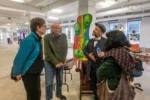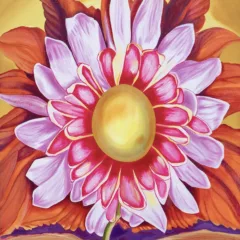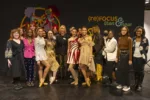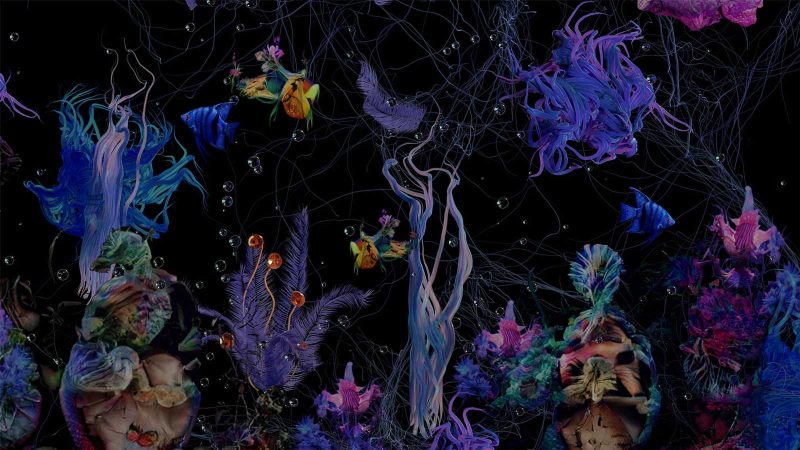
Dear friends,
Artblog has a new contributor, L Autumn Gnadinger! L recently moved to Philadelphia from Louisville, Kentucky – the home of Ruckus, an independent art journal for which L is a contributing editor. In their first Artblog post, L interviews Zoe McCarthy, a DC-born artist who is currently based in Philadelphia. Zoe’s practice involves new media, 3D animation, and mixed reality. The interview was conducted over Zoom and transcribed for Artblog. A new member of InLiquid, Zoe currently has work in ‘New Now IV,’ a group show on view through June 19, 2021 at InLiquid, Crane Arts building, 1400 N American St. We placed Zoe McCarthy’s video Zabione— a piece L and Zoe discuss in great detail in this conversation– at the bottom of this post.
We hope you enjoy this conversation as much as we do!
— Artblog Team
L Autumn Gnadinger: I was fascinated when I saw your work at InLiquid because it seemed to comfortably exist in the middle of so many intersections––pulling in references and components of art, video games, sound design, music, poetry, among others. Given that it is so multidirectional, I’m wondering how you would begin to introduce your work to someone who has never encountered it before?
Zoe McCarthy: As I have been making art over time, I have felt this sense of quest to find the perfect medium for expression. But what I’ve realized is that, for me, it’s not one medium, it’s the convergence of many. I started exploring 3D animation as a way of making spaces that you could inhabit from multiple perspectives. At first, I was still making compositions the way a painter would, but as I was introduced to real-time applications––video game engines and tools to make audio-reactive visuals––I started to feel that instead of just designing a singular composition or something that could be photographed or rendered, it became more about exploring something that was fully immersive.
LAG: In this convergence of many things, you end up with a final object that is multisensory and super dense. How do you approach building all that? Do certain pieces come first or does it all happen simultaneously?
ZM: Parts of my process have become somewhat consistent project-to-project, but it really is different each time. It often begins as a collection of isolated experiments––like sketches––and then realizing at some point that when I zoom out, they’re all motivated by the same emotions. For instance, Zabione actually started off as an album of around 10 songs that were each one minute long, and that was where it began. And at the same time, I was playing around with particle simulations and cloth physics, just to get some interesting visual effects. And it becomes this kind of web. The sketches are done in different programs, but then they come together to form these scenes in Blender, which is the primary 3D program that I use, and what Zabione was ultimately created in. So it’s sort of an assembly of many different parts.
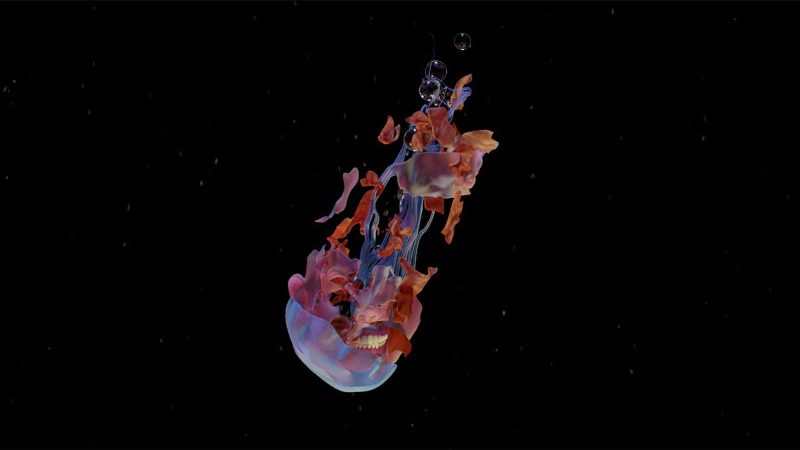
LAG: There’s a scene in Zabione where the camera is slowly approaching this central, marble statue figure, who seems to be a stand-in for this speaker that’s reading dialogue over top. And even after a moment’s glance, my mind made a connection like, “Oh! That looks just like my old Nintendo 64, or PS2!” There’s something really attention-grabbing about the visual quality of it. Maybe it’s the resolution, or the frame rate, or the colors––or maybe I’m just a nerd and I’m seeing what I want to see. What is it about Zabione and your other work like it that might generate that reaction?
ZM: I suppose that it is partially influenced by your exposure to those things. There’s a certain nostalgia because those are games and objects that a lot of people grew up playing. And that’s kind of what I’m going for. I want people to feel a sense of familiarity with the visual quality of it. It’s similar to the way you look at a surrealist painting: it’s rendered in a somewhat realistic way, but it’s also clearly not a picture. It features content that you would never see in reality. In Zabione, I think it’s that sense of comfort that people have with the visual quality which simultaneously pushes them into a new space with content that they wouldn’t have otherwise seen in something like a game. I don’t always go into it with a clear intent to elicit that response in people, but it’s interesting to hear you say that.
LAG: To talk some about the content itself, in certain moments, Zabione is ethereal and mysterious and in others, it taps into this eldritch bio-horror vibe a little bit. It’s equal parts unsettling and beautiful, and I find myself very entranced by it. What is happening in it for you? What do you see in it?
ZM: The whole thing for me is this processing of transformation and death. That beginning part where you’re in the swamp and you’re zooming in towards that marble figure is a kind of preparation for death––approaching the abyss. And then once you’re actually in there, getting deeper and deeper, you begin seeing these beautiful––but to some degree horrific––mergings of different creatures. And I think that process of merging was something that I was experiencing on a personal level at the time I made it. So I was trying to reflect how that actually felt. A lot of the time, it’s almost like a form of journaling for me to create these visual environments or characters––a way of making sense of things. It’s almost like an exquisite corpse cut-and-splice situation. When you get really, really close to a person, especially in a relationship with no boundaries, what does it look like for those parts of ourselves to merge and combine?
So that was what some of the content was based around. I also feel intensely connected to nature. Nature is a huge motivation in the visual content and setting of almost all of my work. My brother is a marine biologist, so we’re both really interested in things like coral communities and fish. Also, the deep sea is like the most bizarre and alien place that exists on Earth. It makes me think about the whole concept of the primordial soup––about that idea of merging and also about where we come from evolutionarily. So there are a lot of things at play there, but I definitely knew that I wanted it to have the qualities you described––being unsettling but also trance-like. I was hoping that by creating that feeling for others it might bring people down into themselves where they could marinate or reflect on what this imagery means for them.
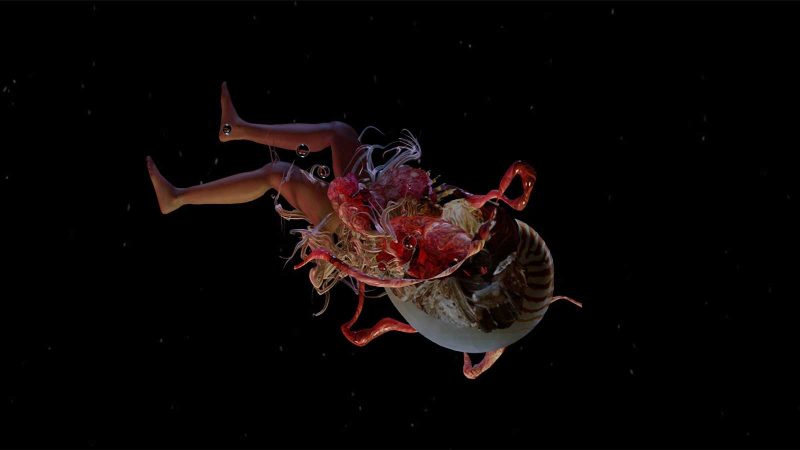
LAG: There’s a lot of work I’ve seen in recent years that shares an interest in digital collage ––usually done by pulling together different resources or assets from the internet to create something new. A lot of that stuff falls flat for me, though, because it’s often done in this very maximalist, here-to-overwhelm you kind of way. The message or content becomes consumed by this fixation on the nature of technology itself. It can feel like a pretty hollow bombardment. But that’s not what I see in your work at all, which is very manicured. It’s more like a floral arrangement by comparison. How does that land for you?
ZM: For me, it’s about creating tension––to have this gradual buildup of intensity. I do seek to make it more trance-like or hypnotic as opposed to being really intense right away, and I think it’s interesting, your point about how a lot of other stuff that’s made with these digital tools. The common theme is just that they’re all made with technology, but there’s not as much of an emotional narrative behind a lot of that work. And it’s not that I want to display the specifics of what I’m feeling to everyone because I am kind of a private person, but at the same time, because emotions can be non-verbal, I want to find a way to express them in a form that can resonate with people without needing to be so jarring––as opposed to seeing something that’s too intense for them and just mentally checking out or distancing themselves.
LAG: I’ve seen Zabione now both in the gallery and at home on my personal computer. Both experiences were really captivating, but there was also something that felt more potent in the vulnerable space of my apartment. Which isn’t to say that the real-life encounter was austere, it wasn’t, but maybe watching it on the internet had this home-field-advantage thing going on. Like I was in Zabione’s territory somehow. I’m curious what you make of that and how you approach translating the virtual object into the physical gallery space––bridging that gap?
ZM: Maybe that speaks to how Zabione was made in a very vulnerable and private space, so I can understand that coming across just in the nature of the work. But it is difficult to take something that exists in a virtual context and then apply it to a physical environment. I don’t exactly know the right recipe, but at the same time, it is something that I really want––especially once you start to make it interactive. Right now it’s just a video and a video can kind of be shown wherever. But I feel like if there was an actual application that someone could open in VR or they would be navigating on a computer––the way that you would a video game––it’s interesting to imagine how that would happen in a gallery space. I’m curious about how to broaden that and bring more people into it at the same time, the way when people go to the movies, they’re all watching a movie together and sharing this experience.
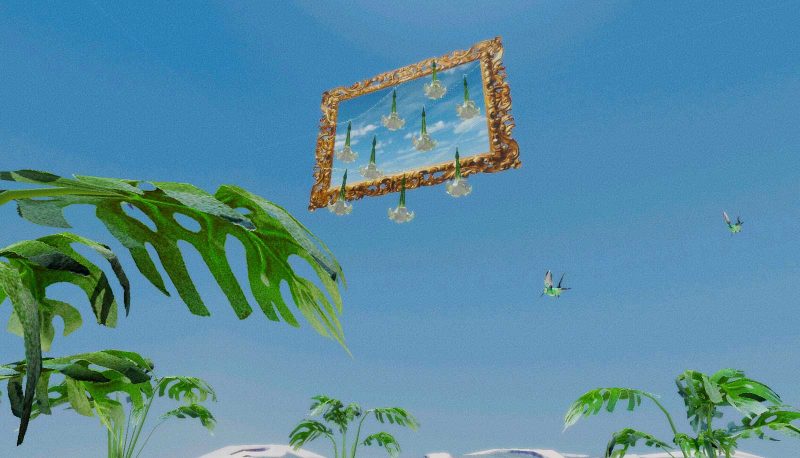
LAG: Going off of that, tell me more about what’s next for you?
ZM: I have been wondering the same thing myself. I feel like my work is moving on a video game and architectural visualization path, and it would be cool to make environments for video games, but since I didn’t really play many games growing up, I’m a little bit on the outside of that industry and culture. I want to use those tools, for sure, but I think for a different context and application. Instead of having a specific goal that you achieve, the way that you do in a video game, I want to bring people into more of these trance-states with a combination of different inputs and then just see what they do. I want to see how they react to being brought away from the surface level––away from being entangled with the physical world. I don’t totally know what that looks like yet. Maybe that means working more in a gallery/museum context or maybe it means exploring other methods of sharing content, like embedding those 3D experiences in browsers.
I also want to work more with other creative people. Even though I have this skill set that covers a lot of different visual programs, it would be really powerful to work with a coder who could build a lot of the architecture for the interactions. And then also work with musicians and people who understand how to build physical installation spaces. The scope of the project could be so expansive. What I can make now is bigger than it has been before, but if I joined forces with other people, we could find new ways to bridge that gap between the isolated game-like experience and the collaborative, collective experience of seeing something in a gallery or public space. So that’s what I want to do.
‘New Now IV’ is on view through June 19, 2021 at InLiquid in the Crane Arts Building, 1400 N American St #314, Philadelphia, 19122. More info can be found here. You can learn more about Zoe McCarthy by visiting her website or her Instagram @sligocreatures. You can contact Zoe via email, zoemdesign@gmail.com
Author Bio
L (they/them) is an artist and writer from Louisville, KY. They are a contributing editor for the journal Ruckus, and a current MFA candidate at Tyler School of Art in Philadelphia, PA.
Watch ‘Zabione’ by Zoe McCarthy
Zoe McCarthy’s “Zabione” (2020), a 3D animated film that utilizes trance-like imagery to explore processes of transformation and death.




